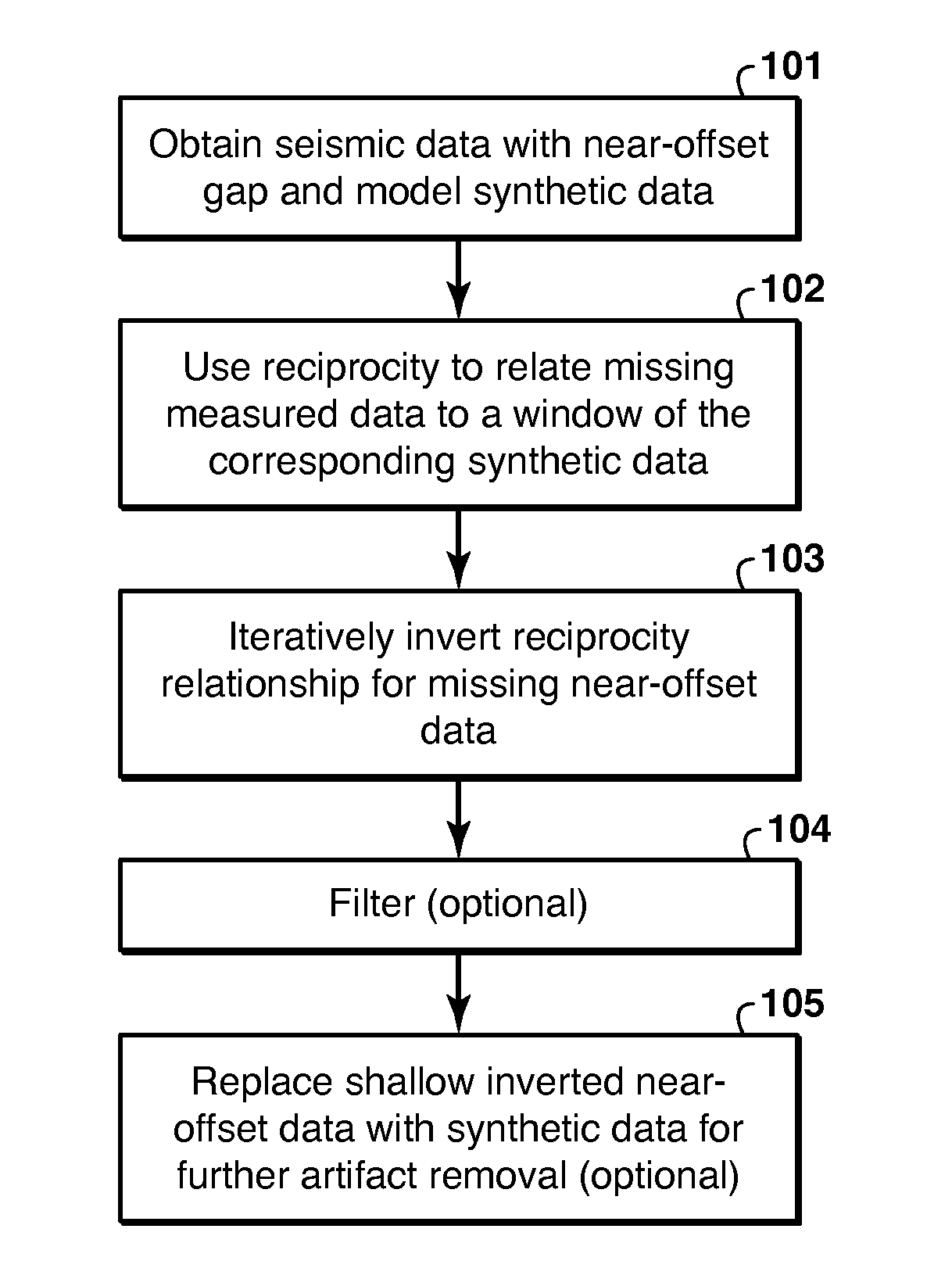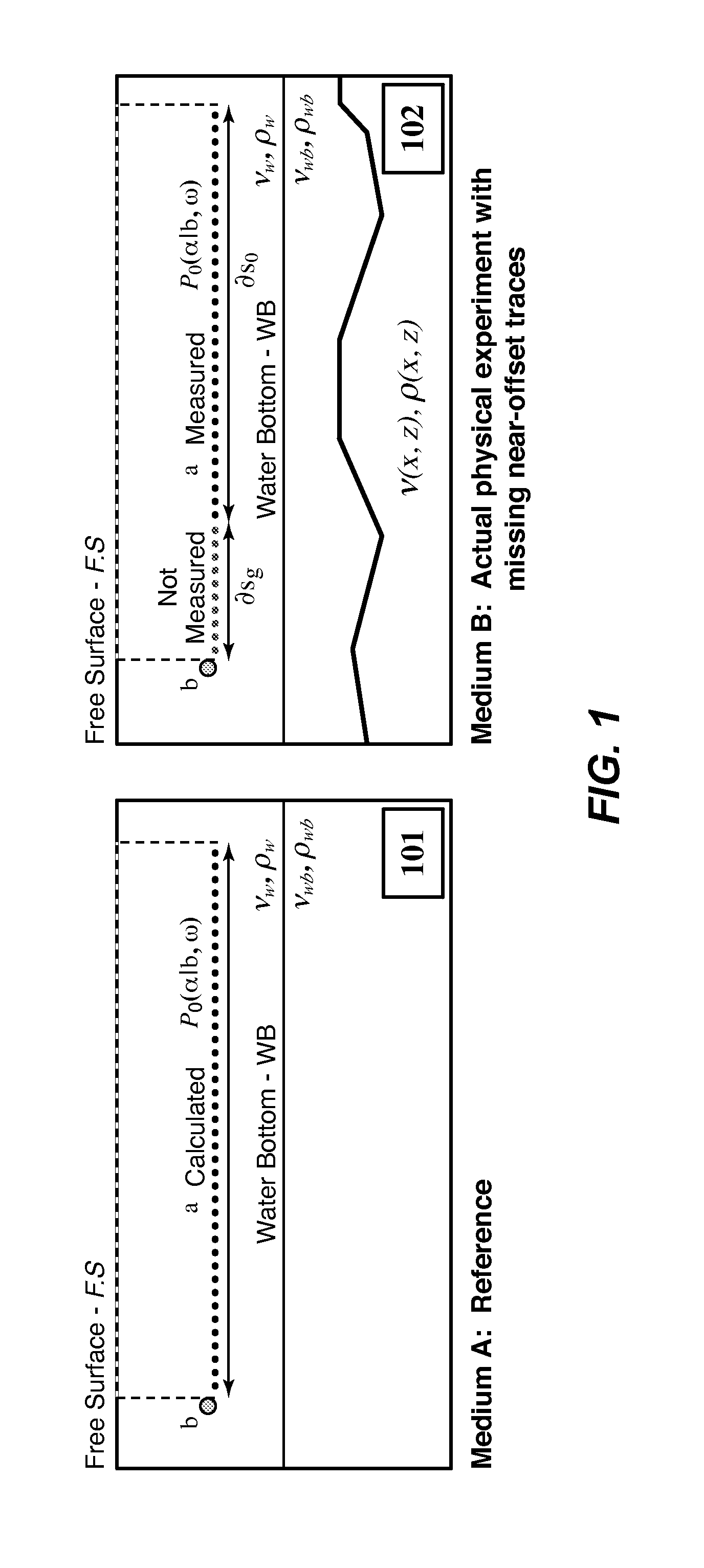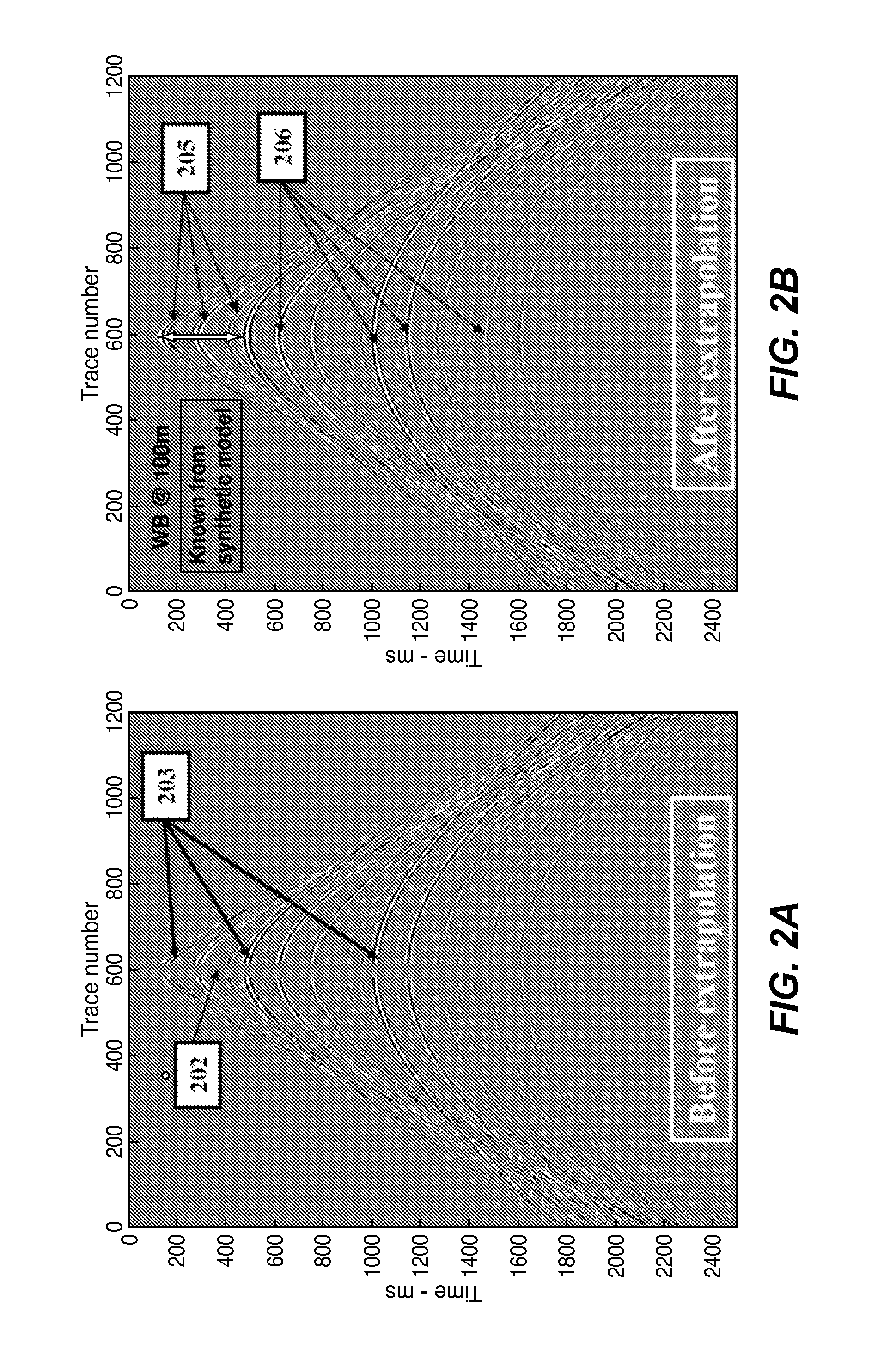Near-Offset Extrapolation For Free-Surface Multiple Elimination In Shallow Marine Environment
- Summary
- Abstract
- Description
- Claims
- Application Information
AI Technical Summary
Benefits of technology
Problems solved by technology
Method used
Image
Examples
examples
[0028]FIG. 2B, shows results of application of the present inventive method to reconstruct missing near-offset traces. After extrapolation, SRME is applied to the data before and after extrapolation to validate the effectiveness of the method. The examples illustrate a marine environment, with a shallow water bottom at 100 m consisting of three layers over a half-space.
[0029]FIG. 2A shows the shot gather with the missing near-offset traces. The missing near-offset gap 202 is 150 m. FIG. 2B shows the shot after extrapolation of the missing traces. In these drawings, 203 are the primary reflection events that one wants to recover after multiple elimination. Pure water layer reverberations are indicated in FIG. 2B by 205. These are not extrapolated, but rather are taken from the reference model simulation. FIG. 2B also shows the extrapolated events 206 in the gap. To check the adequacy of the extrapolation, the multiple contribution gathers (“MCG”) shown in FIGS. 3B, 3C and 3D were pro...
PUM
 Login to View More
Login to View More Abstract
Description
Claims
Application Information
 Login to View More
Login to View More - R&D
- Intellectual Property
- Life Sciences
- Materials
- Tech Scout
- Unparalleled Data Quality
- Higher Quality Content
- 60% Fewer Hallucinations
Browse by: Latest US Patents, China's latest patents, Technical Efficacy Thesaurus, Application Domain, Technology Topic, Popular Technical Reports.
© 2025 PatSnap. All rights reserved.Legal|Privacy policy|Modern Slavery Act Transparency Statement|Sitemap|About US| Contact US: help@patsnap.com



